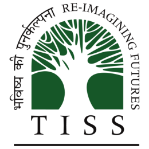TISS Patna Migration Lecture Series, Lecture 11
Archived
Venue: Venue: Library Hall, AN College, Boring Road, Patna
Title of the Lecture: Labour Migration and the Informal Economy
Speaker: Prof. Ravi S. Srivastava
Date and Time: 20th November, 11 am to 12.30 pm
Venue: Library Hall, AN College, Boring Road, Patna
Jointly Organised by: TISS Patna Centre and Dept. of LSW, A.N. College, Patna.
Abstract
Migration of workers from the rural to urban economy is considered to be the sine qua nom of industrialization, urbanization, and capitalist development. The migration of Indian workers to fuel the growth of commercial agriculture, mining and industrialization was not spontaneous but was fostered through modes of recruitment in which labour intermediaries, called by several names still in vogue (Sardars, Munshi etc.) played a very important role. These systems evolved from slavery and indenture and bore strong traits of unfreedom. In the industrial centres, where voluntary migration played a more important role, the workers were still partially tied to the country-side and industrial capital had its task of creating a full industrial proletariat cut out for itself.
Migration in post independent India continued to have permanent and voluntaristic features combined with seasonal and less voluntaristic characteristics. The National Commission on Rural Labour (1991) found that seasonal migration from rural areas was an important feature of rural outmigration, involving nearly ten million workers, many of whom were rural-rural migrants, involved in industries such as brick kilns, quarries and mines, rice mills etc.
In recent years, there is a suggestion that the increase in rural-urban migration is mainly constituted by seasonal/circular migrants, seeking employment in a whole host of industries as informal workers. In other words, rural-urban migrants are less likely to find a place in the urban mileu as organized sector workers with reasonable job security. They are either absorbed in the urban informal sector or are employed as informal workers in the industrial or service sectors. These workers continue to partially depend on their household subsistence on their rural origins and hence also they remain seasonal or circular migrants.
However, it must be conceded that the data on migration does not bring out these features of migration. This is because the population census and the NSS are designed to capture stable populations. In this lecture, I will therefore discuss whether we have enough evidence to map seasonal and/or circulation migration and claims that such migration may have increased in recent decades.
Further, one may ask why is it that seasonal/circular migration may have increased. What are the changes in the production system that fosters unstable employment? What is the nature of employment that is emerging? And what are the implications of the new types of employment for the development process? We will therefore explicate how the nature of capitalist growth, especially in the periphery, has vastly diminished the old forms of rural-urban migration which formed the mainstay of theories of migration and development.
Finally, this lecture will consider the role of policy in relation to labour migration, specifically what should be the goals of such policy.
Interested participants may refer to the following reports and articles:
- Ministry of Housing and Urban Poverty Alleviation (2017). Report of the Working Group on Migration. Government of India. January.
- (2011) "Labour Migration, Inequality, and Development Dynamics in India: An Introduction", The Indian Journal of Labour Economics, Vol. 54, No. 3, pp. 373-385.
- (2011) "Labour Migration in India: Recent Trends, Patterns and Policy Issues". The Indian Journal of Labour Economics, Vol. 54, No. 3, pp. 411-440.
- (2011) "Internal Migration in India: An Overview of its Features, trends, and Policy Challenges". UNESCO, Social and Human Sciences Sector & UNICEF, New Delhi.
- (1998) “Migration and the Labour Market in India”, Invited Keynote paper, Conference issue, The Indian Journal of Labour Economics, Vol. 41, No. 4, Oct.-Dec. pp. 583
About the Speaker
Ravi S. Srivastava is Professor of Economics in the Centre for the Study of Regional Development, Jawaharlal Nehru University, New Delhi. He is a Former Member of the National Commission for Enterprises in the Unorganised Sector (NCEUS), Government of India.











